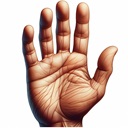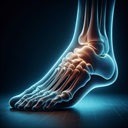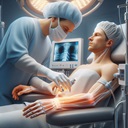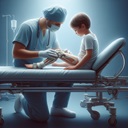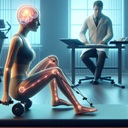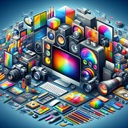In order to plan the treatment a proper medical examination is necessary to establish the etiology and the specific deformity. Medical therapy can be used to solve the problem etiology, but can not change irreversible adaptation deformity of the cartilage, bones and soft tissue. Therefore, the majority of medical therapy aimed at alleviating symptoms.
GETTING USE TO FOOTWEAR
It is possible to consider stretched shoes or use a shoe with a wider and deeper part for the finger. Apart from stretched shoes or reduced pressure on your toes, sheeting and wrapping tape had limited success in management in the long run. However, in the elderly population, sheeting and wrapping may be the best option if the surgical correction is medically inadvisable.
PHARMACOLOGICAL OR PHYSIOTHERAPY
To mitigate acute episodic inflammatory processes,we can offer NSAIDs and physiotherapy. Corticosteroid injections may also be useful for acute inflammatory conditions in the first metatarsophalangeal (MTF) joint. For a justifiable extended physiotherapy treatment on bunions, there is no valid evidence.

Functional Orthotic Therapy
In order to control the biomechanics of the foot it is possible to implement a functional orthotic therapy. This approach can ease the symptoms of bunions, however feet and the first MTF joint must maintain a degree of flexibility. For example, during the examination of a joint it can not move laterally and the position of the sesamoid can not be greater than 4 on the radiograph. These two findings indicate whether the deformity can be reduced or manipulated to the position that is neutral and free of pain.
Flexibility is essential because it allows orthotists to manipulate the joints and feet and reduce deformity providing stability and thus relief. Rigid deformity is possible only by surgical correction because it can no longer be manipulated.
If an orthotic should be made for the patient, the physician should be familiar with the order form for a orthotic prescription to control the patient’s deformity although this form varies from manufacturer to manufacturer. A good understanding of the patient’s request allows the physician to use simple retail devices instead of expensive devices that are made to order.
The physician should be aware of the following problems: the patient’s exercise and weight, top layer material, front and back of the footwear, biomechanical review and possible modifications. More details on this in the following paragraphs.
Activities
When insoles are prescribed, a doctor should be asking these questions: ‘When will a patient primarily use the orthotic? Formal shoes? During sports activities? During the day at work? ‘
Generally, boots give the patient the option of carrying smaller orthotics, but they lack control of shoes with larger insoles. Patients who participate in sports expect more possibilities for suspension and is therefore necessary to use more flexible materials.
WEIGHT
The material can be ordered in different thicknesses. Heavier patients require thicker material that will not bend, break or deform under the weight of the patient. More so, if the patient’s shoe is bulkier, thicker material will be used for the insole so that it can be used without causing orthotics that fit uneasily. Thicker material can add to control.
Top layer
Generally, the orthotic has a lining at the top of the insert to provide cushioning or mitigating or to act as a base. Selections include, but are not limited to skin, vinyl, spenko, ethylene vinyl acetate (EVA), pelit and poron. Upper layers do not contribute to the control of the orthotic and are not functionally necessary.
INSERT FOR THE REAR AND FRONT of the heel
Installing inlay or the outer material which is made from a different material or is molded with the filler or its added later, may increase the stability and control of the insole. The insole for the rear part of the foot goes below the insert to the heel and does not extend to the middle of the foot.
The insert for the back of the foot can be added for biomechanical control in patients with rigid deformities (eg. A rigid forefoot valgus) which can not be satisfactorily controlled nor comfortably with the insole due to the inability to maneuver the patient’s foot. Therefore, a patient with rigid valgus forefoot demands be material added on the outside or below the orthotic and from the lateral aspect to balance the front part and the rear part of the heel.
Biomechanical Analysis
A doctor must determine the type of deformity that the patient has and angular measures are taken to prescribe the correction.
The foot in a neutral position is plaster cast which is not heavy while the front of the foot is loaded to simulate carrying loads. From this cast, the manufacturer starts making the insoles with the built-in corrections. For example, if a patient has a 4 ° flexible varus forefoot, rear part of the foot is likely to compensate for this deformity, thereby allowing the front of the foot to distribute the weight equally over all the metatarsal heads.
A well-built orthotic allows the foot to stand in a neutral position, as in the front and at the back of the foot, eliminating the increased pressures and buckling forces caused by compensation.
Modifications
Possible modifications may include the following measures:
- Increasing the heel height of the orthotic (for increased control)
- Creating a wider medial arch (for flat feet)
- Securing groove plantar fascia (the tight and painful plantar fascia)
- Using metatarsals insoles(for pain below the second metatarsal head, recommended due to inadequate weight carried by the knuckle)
Depending on etiology if destined to be a metabolic or systemic condition, it is best to work with the rheumatologist, neurologist or your chosen doctor to stabilize, manage and slow disease progression and to choose treatment for the bunion deformity.



